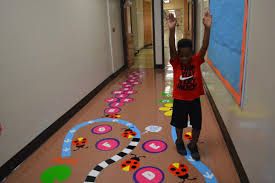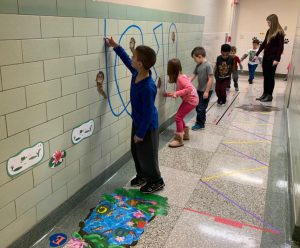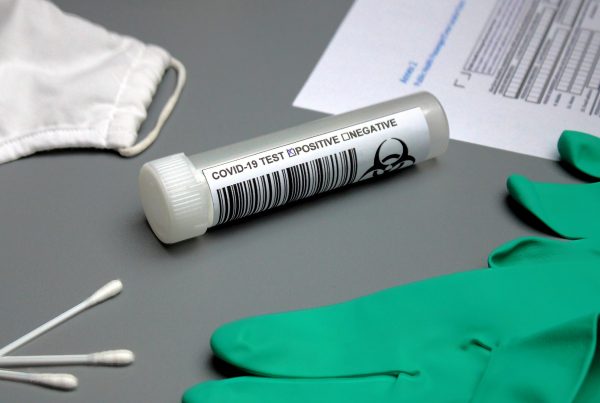
School based Occupational Therapy is simply defined as Occupational therapy practiced in a learning environment/school. This form of occupational therapy is designed to enable the learner access occupational therapy services in their learning environment. In addition, this service is very convenient to the student and the parent/caregivers.
The occupational therapists who practice in this set up are known as School-Based Occupational Therapists and they are mostly Paediatric Occupational Therapists.
School based Occupational Therapists; What Do They Do?
School Based Occupational Therapist’s (OTs) main goal is to work on factors affecting the academic performance of the students in schools, such as: attention and concentration challenges or hand writing challenges. The therapists address the cognitive, physical, psychological and sensory components of performance of the students. The School Based Occupational Therapists ensure that the students are able to actively participate within their learning environments.
These therapists also work with neurodiverse students focussing on the areas that affect play, leisure and academic performance. As an example, an OT working on coordination skills to enable a child to play well with their friends. Or improving the student’s social skills so they are more successful in making and maintaining friendships.
The School Based OT works in collaboration with the school team to enable the special needs students to achieve independence in activities of daily living such as feeding, dressing, and toileting among others.
Channels Used by School Based Occupational Therapists
There are various channels or ways through which the School Based OT can offer their services in the learning environment.
For assessments/evaluations, one to one sessions, group sessions and push-in sessions the therapist can offer the services in two ways.
- On-site: The therapist physically goes to the learning environment and offers the services.
- Virtual: The therapist offers the service through technological devices. This is referred to as Telehealth services.
-
Assessments/Evaluations
School based occupational therapists conduct assessment/evaluation. The findings act as a compass to chart the path of the intervention journey. The results also shed light on the student’s strength and challenges. This is report becomes instrumental for the school team since it offers various recommendations. The parents/caregivers are also able to adapt the recommendations to fit the home environment.
-
One to One Therapy Sessions
After the assessments/evaluations, a tailor made in-school occupational therapy program is then started. The timing of the sessions is picked and the sessions are done on-site or virtually through Telehealth.
-
Group Therapy Sessions
Group Occupational therapy sessions are great to work with a larger number of students. They are also useful for students who may need to access lots of peer learning. Examples of groups are;
- Fine motor groups.
- Gross motor groups.
- Confidence improvement groups.
-
Training and workshops for Teachers and Families
School based occupational therapists offer workshops and trainings for parents and teachers. This enables the participants to learn more about interventions and strategies. In addition, the workshops encourage everyone to be on the same page and they allow a team to work together with the right knowledge and skills required for the student to thrive.
-
Push-in Therapy Sessions
Push-in Therapy refers to occupational therapy sessions delivered in classrooms during the normal events of the school day. In this set up, the school based occupational therapist carries out the therapy sessions during class time.
Benefits of Push-in Therapy Sessions
- It reduces the stigma for the student since (s)he will not be leaving his/her classmates.
- It is less disruptive for the student as (s)he just seems to flow with their normal routines.
- Other students in the classroom benefit from this support, this includes those who are unidentified and might have the same challenges.
- Both the occupational therapist and the teaching team gain a better understanding of the child and a great collaboration is forged.
- It creates an opportunity for peer learning and modelling.
-
Adaptation/Modification of School Environments
A School Based Occupational Therapist is able to assess and make recommendation for adaptations and modifications of the school environment to help students access good education just like the others. This is truly important for the special needs students since it promotes inclusion.
Such adaptations include:

- Advising the school team on where to position an ergonomically child friendly working area.
- Providing and showing students how to use hand writing helpers (slant boards, pencil grips, raised lines).
- Designing and setting up Sensory pathways. These can be located in the hallways or play areas; the Sensory pathways allow the students to perform sensory circuits. The sensory circuits have immense benefits to all students.
- Designing and setting up Motor labs. This space is designed to enable children develop their fine motor and gross motor skills.
- Adapting playgrounds to be inclusive.
- Adapting the bathroom and toilets to be disability friendly.
Which Students need to Access School-Based Occupational Therapy?
School based occupational Therapy is provided to a variety of students. Students with any form of delays in their development would need OT. In addition, any student diagnosed with Dyslexia, Attention Deficit Hyperactivity Disorder(ADHD), Attention Deficit Disorder(ADD), Autism Spectrum Disorder(ASD), Dyspraxia, Dyscalculia, Down Syndrome, Global Learning Difficulties, Cerebral Palsy would benefit from In-School OT sessions.
Factors that encourage success of the School Based OT Service
Collaboration
School based Occupational Therapy is a concerted effort between the OT, school team and parents. When there is regular and/or frequent communication between the parties, a seamless collaboration is established. This then speeds up the progress of the student.
Consistency
School based Occupational Therapy should be consistent in terms of quality and frequency. When the one-on-one sessions, group sessions and push-in sessions are consistent, it becomes easier to make, record and track notable progress as well as achieving the goals set.
In Conclusion
School Based occupational therapy enables many students to access Occupational Therapy services within their learning environment. It is of great benefit to the students, teachers and parents. The convince it offers to the student and parent/caregiver makes it a viable option. The school team and the therapists form a great symbiotic relationship where they learn from each other. This improves quality of the education and the sessions.





